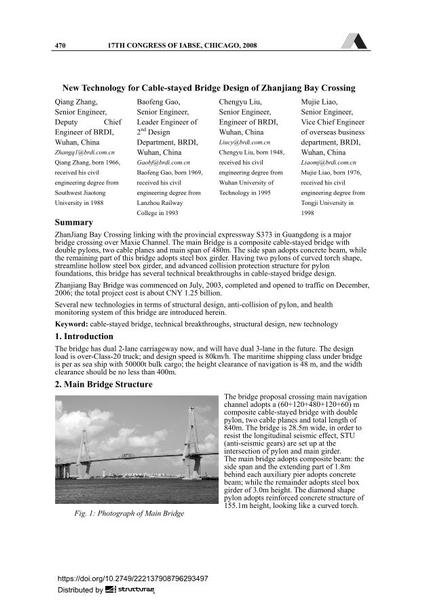New Technology for Cable-stayed Bridge Design of Zhanjiang Bay Crossing

|
|
|||||||||||
Détails bibliographiques
| Auteur(s): |
Qiang Zhang
Baofeng Gao Chengyu Liu Mujie Liao |
||||
|---|---|---|---|---|---|
| Médium: | papier de conférence | ||||
| Langue(s): | anglais | ||||
| Conférence: | 17th IABSE Congress: Creating and Renewing Urban Structures – Tall Buildings, Bridges and Infrastructure, Chicago, USA, 17-19 September 2008 | ||||
| Publié dans: | IABSE Congress Chicago 2008 | ||||
|
|||||
| Page(s): | 470-471 | ||||
| Nombre total de pages (du PDF): | 6 | ||||
| Année: | 2008 | ||||
| DOI: | 10.2749/222137908796293497 | ||||
| Abstrait: |
ZhanJiang Bay Crossing linking with the provincial expressway S373 in Guangdong is a major bridge crossing over Maxie Channel. The main Bridge is a composite cable-stayed bridge with double pylons, two cable planes and main span of 480m. The side span adopts concrete beam, while the remaining part of this bridge adopts steel box girder. Having two pylons of curved torch shape, streamline hollow steel box girder, and advanced collision protection structure for pylon foundations, this bridge has several technical breakthroughs in cable-stayed bridge design. Zhanjiang Bay Bridge was commenced on July, 2003, completed and opened to traffic on December, 2006; the total project cost is about CNY 1.25 billion. Several new technologies in terms of structural design, anti-collision of pylon, and health monitoring system of this bridge are introduced herein. |
||||
| Mots-clé: |
Pont à haubans
|
||||

